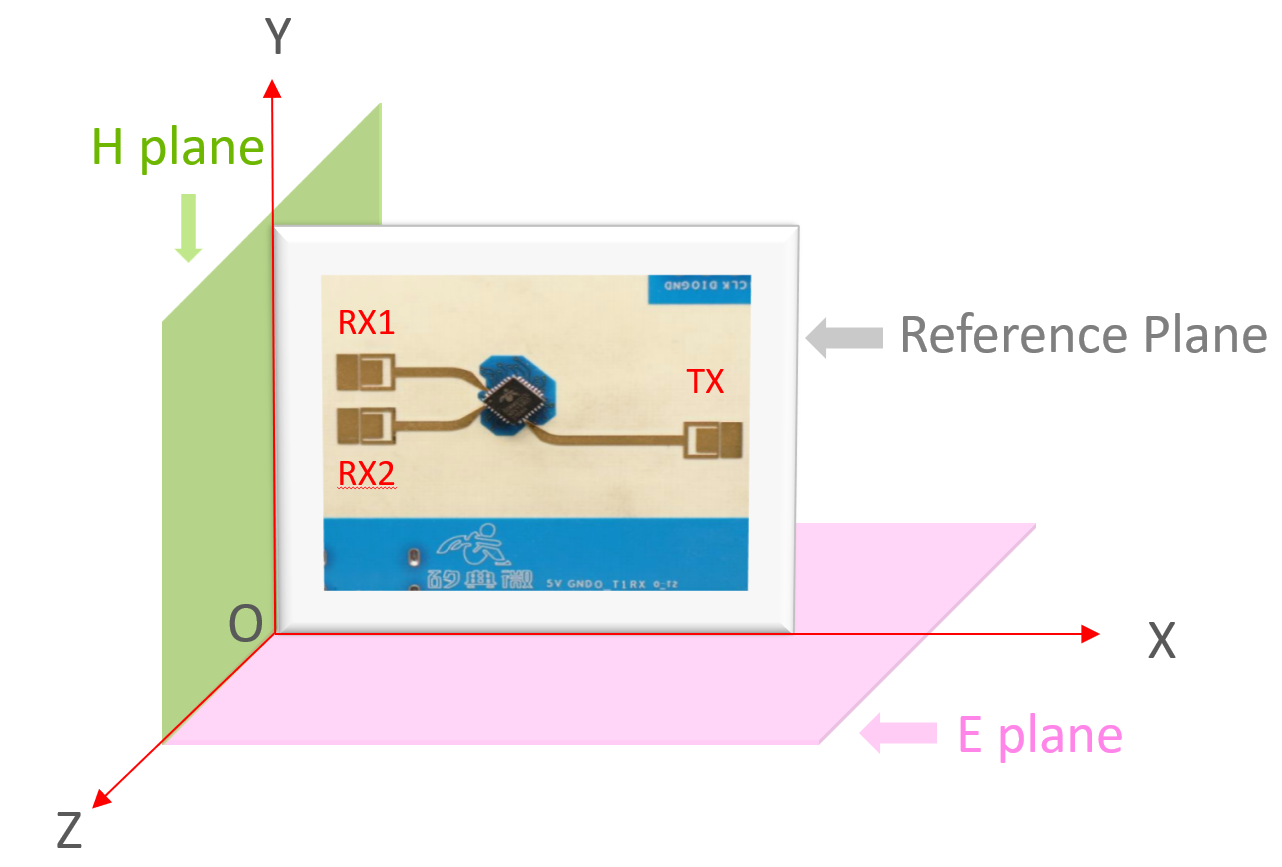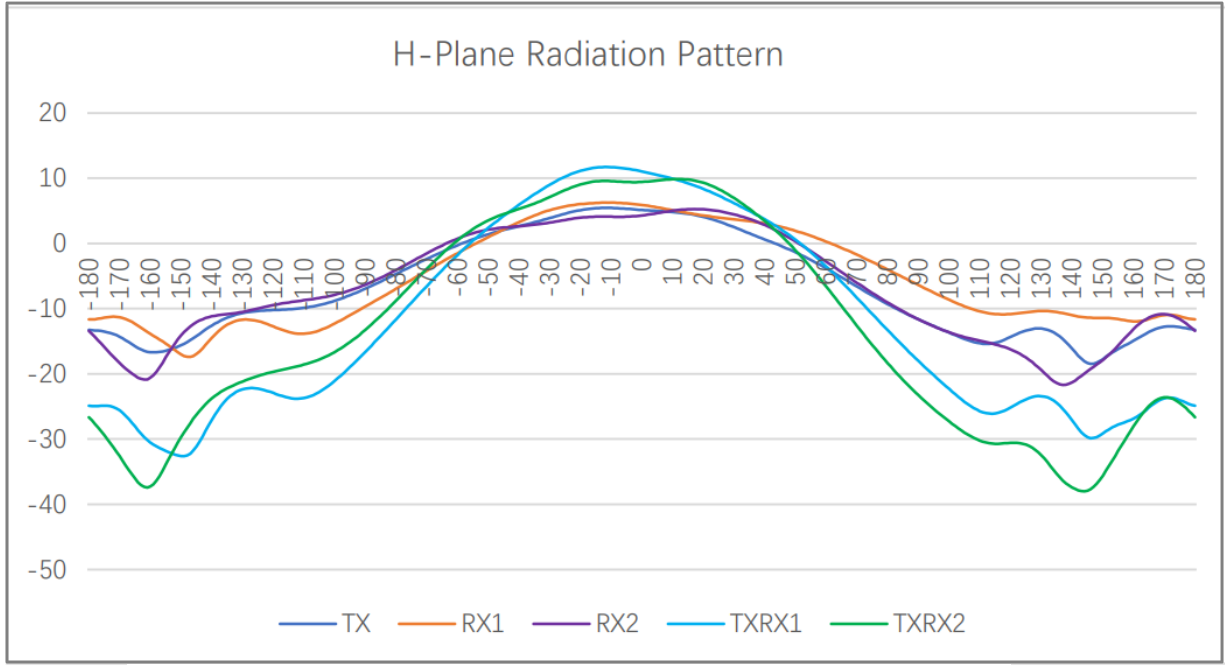System Characteristics
EVBKS5 evaluation board has the following characteristics.
| Parameter | Description | Min. | Typ. | Max. | Unit | |
| Frequency Range | 23.5 | – | 27.5 | GHz | ||
| Chirp Bandwidth | – | 0.25 | 4 | GHz | ||
| EIRP | – | – | 16.8 | dBm | ||
| Power Supply | 3.3 | 5 | 5.5 | V | ||
| Size | 43.2 × 41.5 | mm | ||||
| Operating Ambient Temperature | Tcase | -40 | – | 85 | °C | |
| Data communication | UART or USB Type-C | |||||
| Programming and debugging | SWD interface, or via GUI IAP function; | |||||
1. Antenna Characteristics
 |
Antenna Radiation Plane | |
|
– E- plane denotes XOZ plane – H-plane denotes YOZ plane. |
||
| Antenna Characteristics | ||
|
– The simulated antenna gain is about10dBi @ normal direction. – FOV(Detecting angle): 40 @ H-plane, 45 @ E-plane – 6dB back-off FOV: Around 72(H plane) × 85(E plane). |
Note. Please be aware that the value of 72 × 85 is applied to -6dB half-power beam width.
However, this does not mean that the radar sensor is not capable of detecting targets outside this angle range.
Therefore, to confirm the radar sensor’s effective detecting area, the target’s distance from the radar as well as its RCS must be taken into consideration.
2. Antenna Radiation/Gain Pattern
The unit of antenna gain(Y axis) is dBi



